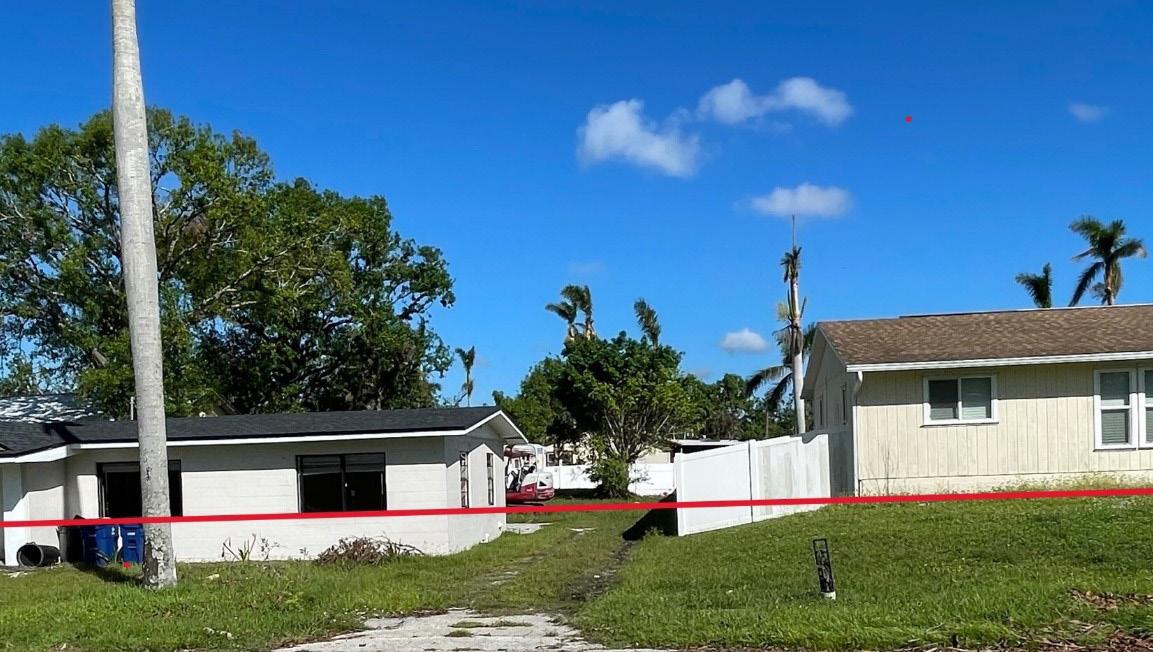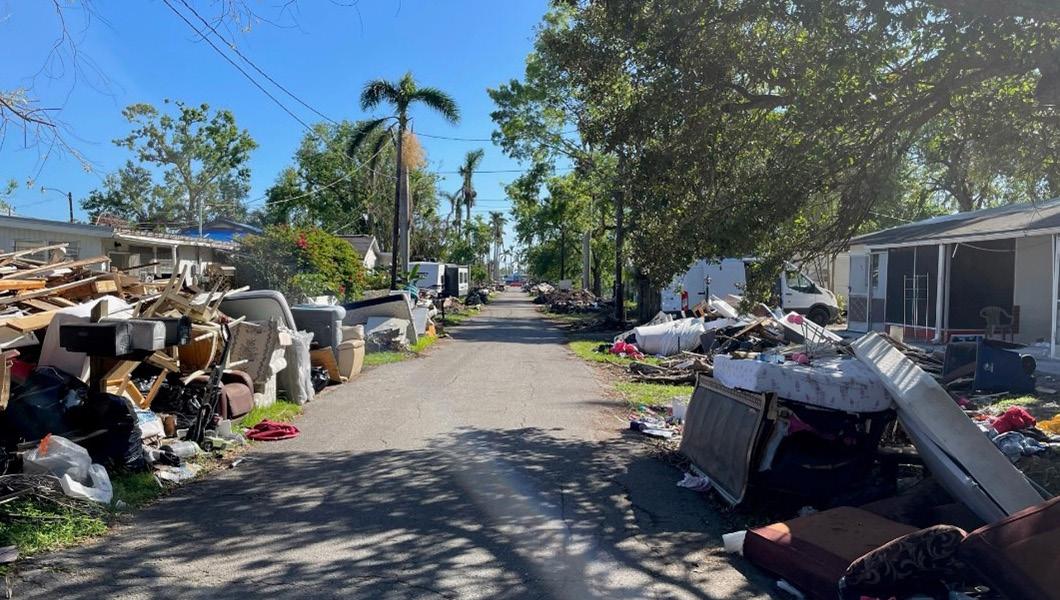
2 minute read
resilience and recovery
In this photograph taken in North Fort Myers, the red line shows the high-water line and the impact on homes built prior to flood elevation requirements. In a preliminary analysis by FEMA less than 10 percent of registrants had flood insurance. As flood maps are revised to reflect expanding flood hazard areas, flood insurance - for both homeowners and renters - will be essential.
This teapot was on the ledge of a damaged RV and survived Hurricane Ian unscathed.
Advertisement

include Direct Lease, the Multifamily Lease and Repair Program, and Temporary Transportable Housing Units otherwise known as RV’s and mobile homes. Temporary housing programs assist both homeowners and renters find a place to live during their homes repair or replacement. FDEM rolled out its flagship Non-Congregate Sheltering Program (NCS) that will deliver RV’s to homesites or commercial RV parks. These units are staged for up to 6 months by pre-selected vendors, and occupants will receive case management services to develop their housing recovery plans. Survivors with remaining unmet needs of any kind can register with Governor DeSantis’ highly anticipated Florida Unite online dashboard to apply for NCS, the State-run RV program, as well as many other services.
While there is concern for prioritizing temporary housing for the emergent population and permanent housing for those in short term housing situations, housing providers are also concerned with those who have returned to homes that remain unsafe or uninhabitable. Volunteer Florida has unveiled Sheltering in Home for Recovery Continuation (SHRC), a grant program open to nonprofit aid organizations using volunteers to repair damaged housing. SHRC will focus on making homes habitable as shelters close and other temporary programs end. The fund is seeded with $25 million from the Florida Disaster Fund and will be disbursed through a Request for Proposal process. SHIP Administrators in the impacted counties quickly pivoted to allocate any unencumbered funds to emergency assistance and repairs. Disaster Strategies were activated and advertisements for help were published. The statewide SHIP Disaster Holdback of $5 million was earmarked by Governor DeSantis for insurance deductibles for the 7 hardest hit counties and was quickly implemented. SHIP administrators along with their community partners are well-rehearsed to deploy funding to back up FEMA assistance and insurance claims to allow lower income residents to clean up debris and repair their storm damaged homes.

In this North Fort Myers community debris piles obscure the former dwellings, many pre-1970 recreational vehicles and mobile homes that have over the years been extended with porches and sheds. These parks are prime for redevelopment even considering that over two feet of storm surge inundated the neighborhood. The risk of displacement is extreme as housing providers and planners grapple with land use and zoning issues, upgraded wind load requirements for manufactured housing, and fair housing protections for the residents.

Gladys Cook is a member of the Board of Directors and is the former Resilience and Recovery Director for the Florida Housing Coalition. As a planner, Gladys provides research and analysis skills in the formation of disaster recovery strategies for the equitable redevelopment of housing.








